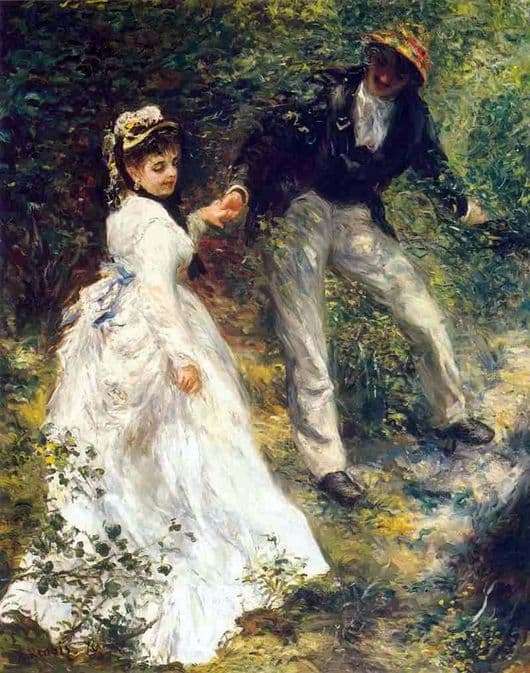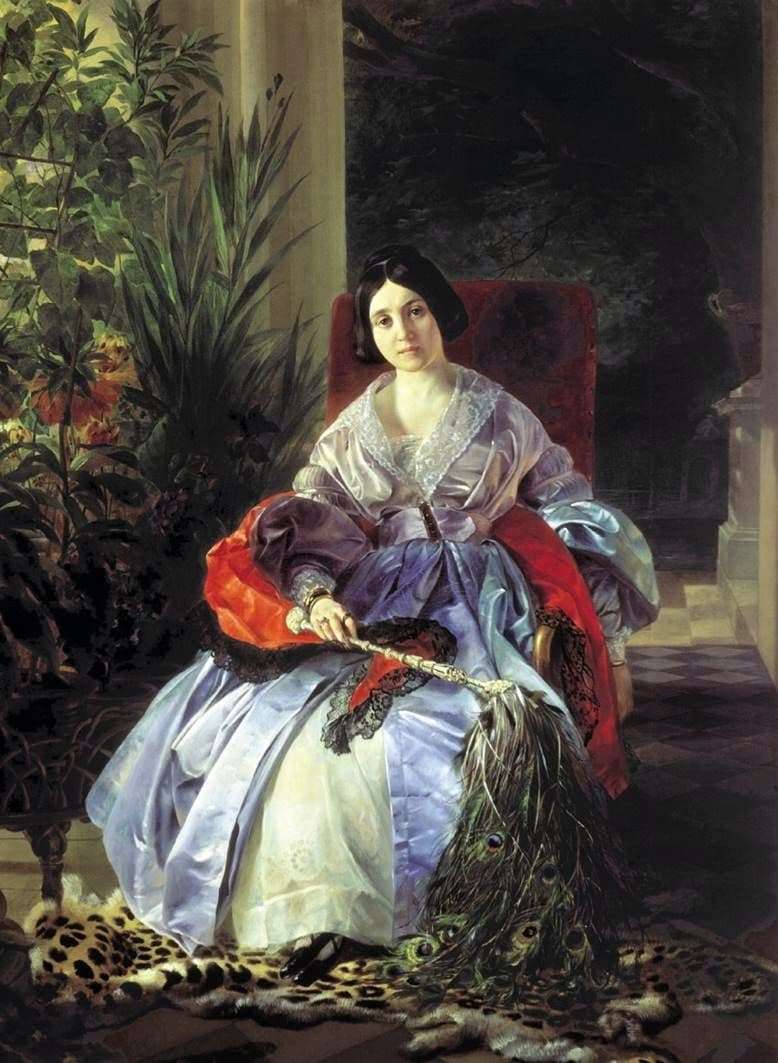
Watercolor created in 1849.
We see a group of people walking around Madeira. The artist concentrated all his attention on an unusual wheelchair. Oxen are drawn into it. Ladies and two gentlemen comfortably settled in such an exotic carriage. People are specially allocated to emphasize their particular position. Only after this, the viewers are already shifting their gaze to those riders who are accompanying this magnificent carriage.
The painter used in his watercolor incredibly bright colors. The whole landscape as if from the inside is filled with sun. We feel it not only in every blade of grass and leaves, but also in the central characters of this magnificent creation. With extraordinary skill each figure is registered.
We feel a special movement, which is transmitted by the position and turn of the head of all people. Graceful horses and strong oxen are traced very realistically and unusually brightly. They are so real that it seems that we can hear the sound of hooves and the creaking of wheels.
On the one hand, the plot is very exotic. But at the same time it is as simple and ordinary as possible. The artist makes the audience feel that there is nothing special here. This kind of walk was the usual entertainment of rich people on Madera. Bryullov just saw one such scene and captured it in his watercolor, skillfully combining it with a masterfully painted landscape.
The realistic and at the same time quite exotic plot of this creation is so real that we don’t think that someone specially posed for the artist. This life picture, captured as realistically as possible, creates an incredibly sunny, full of cheerfulness mood. The abundance of light and the colorful composition, written down to the smallest detail, speak of the extraordinary mastery of the artist, for which all the details are significant.
Description of the painting by Karl Bryullov “Walk”







